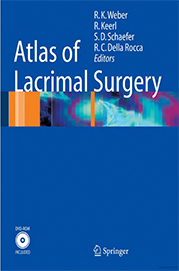Aging and environmental factors (sun exposure, gravity, and smoking) all affect the face, resulting in wrinkling of the forehead, frown lines and increasing heaviness of the eyebrows. This drooping of the eyebrows often puts added weight on the eyelids, adding to a more tired look to the eyes. A brow lift or forehead lift is a procedure that our ophthalmologist, Dr. Syed Ahmad, performs to restore a more youthful, refreshed look to the area above the eyes by raising and repositioning a drooping brow.
Is This Procedure Right for You?
A brow lift is usually performed in patients in the 35-65 age range to minimize the visible effect from aging. It can also help people of any age who have developed furrows or frown lines due to stress or muscle activity. Some individuals with inherited low, heavy brows or furrowed lines above the nose can also achieve a more alert and refreshed look with this procedure. Sometimes a patient who believes they need upper eyelid surgery finds that a brow lift better meets their needs.
Non-Surgical Alternative
A minimally invasive but less permanent approach to the surgical brow lift is the use of facial cosmetic filler. One limitation to using these injectables is that they will need repeat touch-ups and do not provide a long-term result.
Surgery & Anesthesia
This type of surgery can be performed under monitored anesthesia care and is performed by an anesthesiologist. The main advantages of this anesthesia are: (1) it does not require putting a breathing tube in the throat, (2) it does not require a breathing machine, (3) the recovery is much faster, and (4) there is less nausea after surgery. All of these elements translate into greater comfort and safety.
This type of anesthesia entails an intravenous needle that is placed into one of the veins of the arm or hand. Relaxing medication is given to make the patient fall asleep. The amount of medication is adjusted as needed. After the patient is asleep, numbing medicine is placed into the skin of the area that is being operated on. During the procedure, the patient is unaware of anything going on and cannot hear or feel anything even though he or she is breathing normally.
Patients over age 60 and those with a current medical condition(s) are required to have a preoperative physical examination, blood work, and EKG performed by their primary physician before surgery for the safe administration of anesthesia.
Recovery Period
There may be some tightness of the head for the first one to days after the surgery. Although you should be up and about in a day or two, plan on taking it easy for at least the first week after surgery. You should be able to shower and shampoo your hair within two days, or as soon as the bandage is removed. Discoloration and swelling around the eyes will improve over five to seven days. Most patients are back to work or school in a week to 10 days. Vigorous physical activity should be limited for several weeks, including jogging, bending, heavy housework, sex, or any activity that increases your blood pressure. Prolonged exposure to heat or sun should be avoided for several months. Most of the visible signs of surgery should fade completely within about three weeks. Minor swelling and bruising can be concealed with cosmetics. You may feel a bit tired and let down at first, but your energy level will increase as you begin to look and feel better.
If you are an out-of-town patient visiting our eye care office in Plano, Texas, please do not hesitate to contact Texas Eye & Aesthetic Center at 972-519-9933 to help arrange your travel plans.




